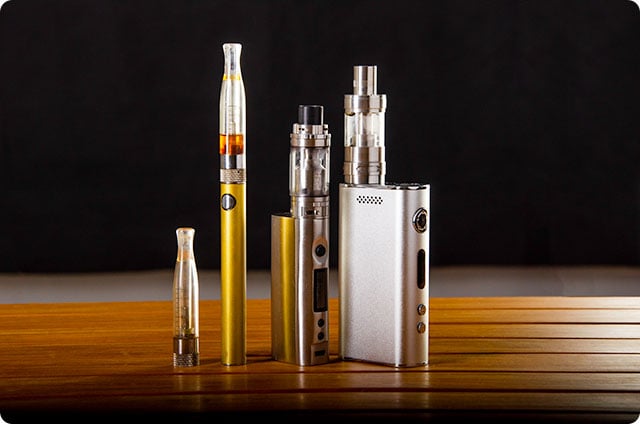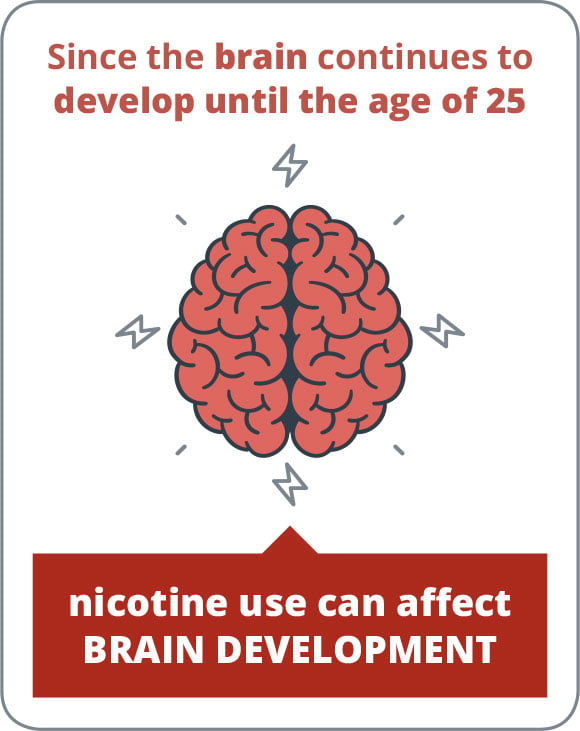News Release: Montgomery County, Maryland
General Information
- The consumption of e-cigarettes is the latest public health threat to schools in the United States.
- The most popular e-cigarette is a ”Juul.”
- Teens are drawn to e-cigarettes because of their fruit-like flavoring and easy concealability.
- Most e-cigarettes contain up to 5 percent nicotine. Regular cigarettes contain no more than 1.7 percent nicotine.
- Vapors from e-cigarettes can be transparent and odorless.
- The federal government is attempting to outlaw flavored nicotine products.
- Teens are being targeted by manufacturers with advertising.
Consequences
- E-cigarettes are prohibited on school grounds. When found, they are treated like tobacco and cigarettes.
- Consequences can range from tobacco education classes to school suspension.
- Refer to page 14 of the Student Code of Conduct for guidelines.
- A minor in possession of an electronic nicotine delivery system is in violation of the law and will be issued a civil citation.

 Things to Look For
Things to Look For
- Unusual hand movement or palming
- Sweet smells in classrooms, halls or restrooms
- Clouds of vapor or steam
- Holes in backpacks (used to blow vapor inside)
- Odd reaction to loss of or request to inspect USB-type devices
Juul {pronounced Jewel}
- Juul has more than 70 percent of the e-cigarette market share.
- A Juul is battery-powered and must be charged, usually in a computer USB port or plug.
- Juul flavor pods look identical to USB devices and are color-coded.
 Health Risks
Health Risks

- The developing brain is very susceptible to addiction and nicotine is highly addictive.
- Studies conducted by the New England Journal of Medicine have shown that the nicotine hit in an e-cigarette can act as the gateway drug for a young person, just as regular cigarettes have done in the past.
- A study conducted by the University of Southern California suggests that some teens who never would have smoked cigarettes are now vaping.
- Metal microparticles released by e-cigarette heating coils put students at risk for reactive airway disease, asthma and even emphysema.
Many dangerous and deadly chemicals are contained within e-cigarettes. Some of these chemicals are also included in:
- Antifreeze
- Nail Polish Remover
- Paints and Pesticides
- Embalming
- Cigarettes
- Fireworks
 Safety Risks
Safety Risks
One of the greatest safety risks is the explosion of an e-cigarette battery
- E-cigarette battery explosions can be deadly.
- Not all e-cigarettes have safety features to protect against overcharging.
- E-cigarette batteries inadvertently coming into contact with other metal objects, such as keys or coins in a pocket, could cause an explosion.
- E-cigarettes can explode if used with a charger not supported by its manufacturer. E-cigarettes should never be charged with a phone or tablet charger.
- E-cigarette devices can explode if the battery has become damaged or wet.
- All e-cigarette explosions or unexpected health or safety issues must be reported immediately to the U.S. Food and Drug Administration and the MCPS Department of School Safety and Security.
For additional information or questions, contact:
Alyson Baber or Mary Whalen
Cluster Security Coordinators
Montgomery County Public Schools
240-740-3066
A special thanks to Charles County Public Schools and the Howard County Police Department for sharing information on this critically important topic.
